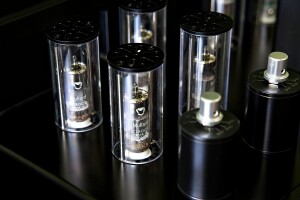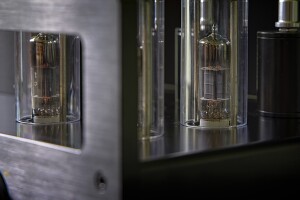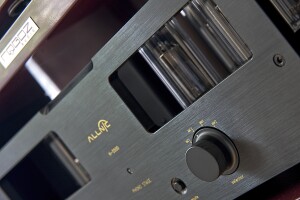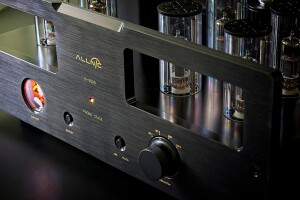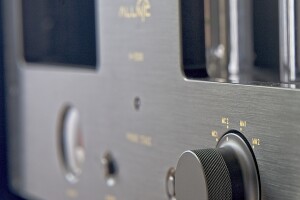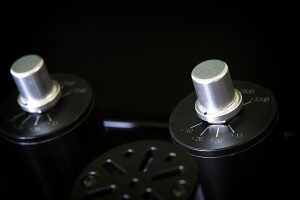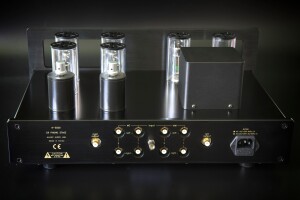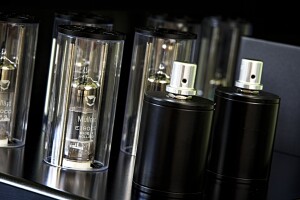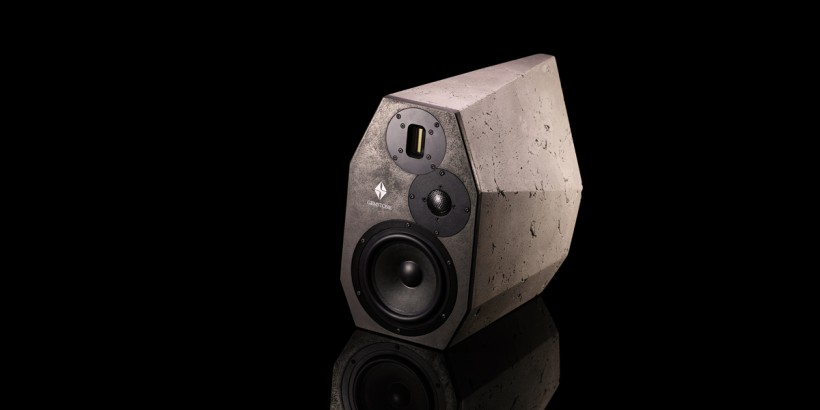The (relatively) reasonably priced Allnic Audio H-5500 tube phonostage offers as many as four inputs, two for MM and two for MC cartridges, and built-in step-up transformers for the latter. It also comes from a reputable brand and looks really good. Does its performance match the looks? Let’s find out.
Introduction
A quick Internet search will show that the market of phono preamplifiers is dominated by solid-state designs. Yet, the vast majority of the best sounding devices of this type that I have had a chance to listen to featured tubes. The ones that occupy the very top of my personal best of the best phono preamplifier list are products of such famous tube masters as Kondo, Audio Tekne, or Thoeress. Admittedly, my absolute No. 1, the Tenor Audio Phono 1, is a hybrid design, but it still means you’ll find tubes in it and they do play a significant role in achieving this one of the kind performance. The only „issue” (at least from my perspective) with these phonostages, as well as with many other great-sounding ones I haven’t mentioned, is that to become an owner of one of them you need really deep pockets. That’s why most of us have to look for other, more affordable, which doesn’t necessarily mean cheap, options. The Korean Allnic Audio, a highly acclaimed company specializing in tube components, might have an answer for us with their entry-level H-5500 phonostage, the subject of this very review.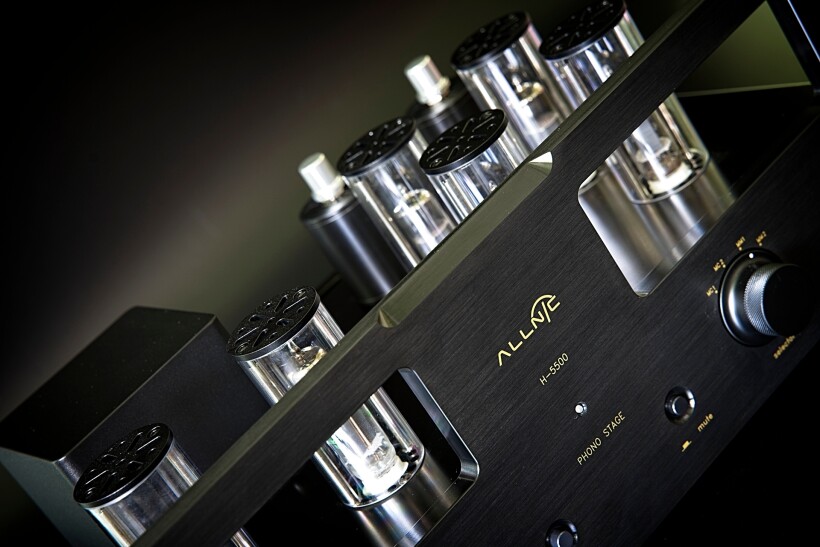
The Allnic Audio products only recently hit our market, although the brand has been around for several dozens of years. You can find the history of the brand in my previous review of the Allnic Amber MC cartridge, so I won’t repeat it all here. If you’re interested, you can find it HERE and apart from my assessment of this excellent pickup, you will also find there an explanation for the brand’s name. Long story short, it is derived from the nickel used in transformers manufactured and used by Allnic Audio in their own components. To be precise, nickel is one of the main ingredients of an alloy known in audiophile circles as Permalloy, which is used in transformers’ cores.
I also mentioned there that my first hands-on experience with one of Allnic Audio’s products had happened several years ago when I’d brokered a purchase of a second-hand phonostage for a friend of a friend who allowed me to listen to it in my system for a few weeks. Funny fact, I’m not even 100% sure about the model. It was for sure one of the DHT (direct heated triode) designs, so most likely the H-5000 DHT. It sounded fantastic! Ever since, I have been waiting for an opportunity to meet more components developed by the Korean company’s boss and its chief designer, Mr. Kang Su Park. It took quite some time but finally, a Gliwice-based distributor, 4HiFi, decided to partner up with Allnic, and since then they have already introduced several products to our market. The already mentioned top-of-the-line Amber MC cartridge, that I reviewed first, turned out to be yet another highly memorable experience, so I couldn’t wait for my next Allnic review. The second chance came along with the top integrated, the Allnic Audio T-2000 30th Anniversary that I reviewed for HighFidelity.pl (see HERE) and the third with the H-5500 phono preamplifier. Also, the fourth is already in the works – I’ve already started to listen to the remarkable T-1500 MK II, which belongs to my favorite category of 300B SETs.
For now, let’s get back to the subject of this review. The H-5500 is a successor to Allnic’s previous entry-level phonostage, the H-1202. I am not an expert on the brand’s model-naming policy, but the fact that the designation of the new one seems closer to the aforementioned, discontinued H-5000 DHT, plus common sense, suggest that the new one offers some, if not significant, advantages over its predecessor. It is worth noting that DHT products belong to a more advanced /high-end lot in Allnic Audio’s lineup. By that logic, I did not realistically expect the H-5500 to be as spectacular a performer as the DHT one, whose sound was so strongly imprinted in my memory, but I hoped it would offer at least an interesting and satisfying experience. And so it did, and more…
Design and features
Most Allnic Audio components share a similar, distinctive appeal, and the H-5500 is no exception. The brand’s hallmark (at least for preamplifiers and phonostages) seems to be a high, thick, aluminum front, almost twice as tall as the actual chassis behind it. It features two cutouts, which allow you to see the glowing tubes sitting in their sockets on the top of the solid, rigid, well-fitted, and finished housing. It seems as if the height of the chassis itself was selected so that the tops of the tubes (or their covers) were flush with the upper edge of the high front panel, although this may be a pure coincidence (if you believe in those). Each tube sitting in a quality socket is enclosed in a glass „chimney” with a perforated metal cover at the top, that ensures proper ventilation. These chimneys not only protect (to a point) curious hands and paws from getting burned but add their two cents to the charming aesthetics of the H-5500. 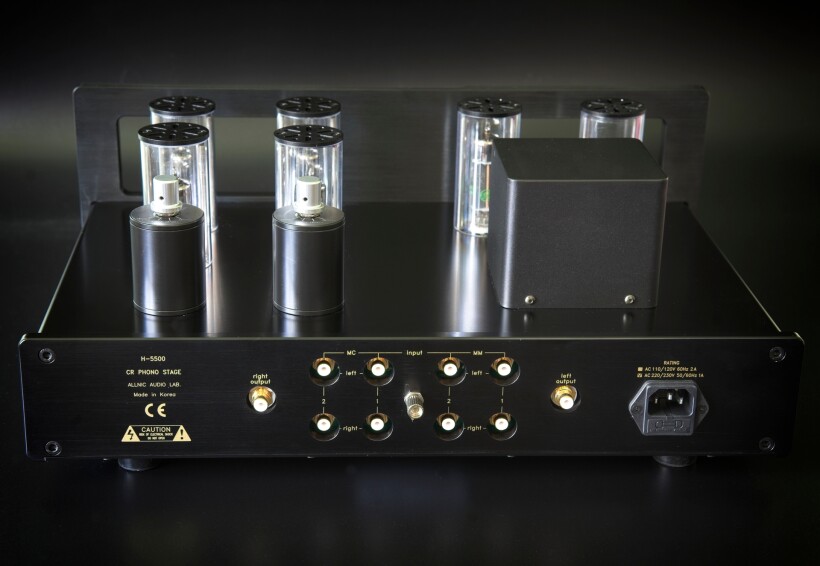
Another characteristic element of the exterior design is two metal cylinders with rotary switches on top of them placed behind the tubes. Each of the cylinders, separately for the right and left channels, controls the impedance loading for moving coil cartridges. There are four options to choose from: 278 Ω, 117 Ω, 69 Ω and 29 Ω, which correspond to different gain levels: + 22dB, + 26dB, + 28dB and + 32dB. These values may seem low for MC pickups but don’t worry, they are added on top of the basic gain (for MM cartridges) amounting to 38 dB. A quick calculation reveals that the maximum gain one can choose for a MC pickup is 70 dB, which means that the H-5500 is able to work with virtually any moving coil cartridge, including those with the lowest possible output signal level. Moreover, this additional gain for Moving Coils is achieved using built-in step-up transformers, considered by many as the best possible option.
The Allnic Audio H-5500 is a class A design with no negative feedback. Two pairs of NOS E180CC double triodes were selected for the signal amplification stage. The power supply is also tube-based and it features one 7233 and one 5654 tubes. Sort of obliged by the brand’s name (and convinced of their superiority), the designer used Permalloy (nickel and iron alloy) core transformers also for this, entry-level, device. Compared to its predecessor, the H-1202, which used the same set of tubes, the power transformer has been upgraded along with the whole power supply section (double capacity). The aforementioned built-in step-up transformers used for the H-5500 come directly from more expensive phonostages, i.e., the H-7000 and H-8000. To improve the shielding of the preamplifier circuit, the manufacturer uses Mu-metal (i.e., also an alloy of nickel and iron with small additions of copper and molybdenum) shielding. Highly precise (+/- 0.3 dB) RIAA correction is executed in a CR circuit.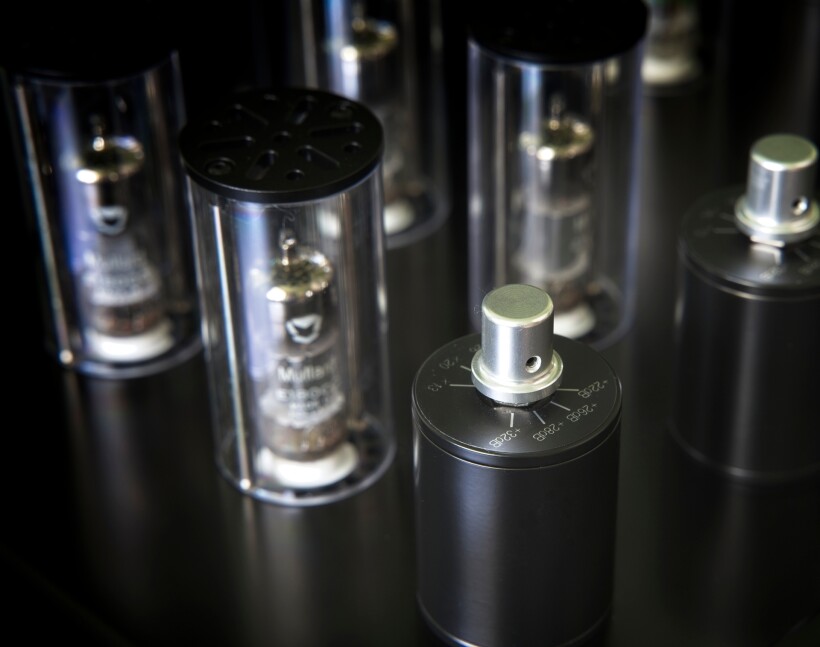
The large knob on the front is used for input selection; two small buttons come in handy when you want to switch the device and the mute function on and off. A very nice-looking backlit VU meter allows you to monitor the tube bias, although the H-5500 features an auto-bias circuit so you don’t need to worry about taking measurements and adjusting the bias manually. The reviewed phonostage has yet another useful feature – a so-called “soft start” that extends tubes’ life span. It also means you have to wait roughly 40 seconds each time after turning the H-5500 on before it is fully operational, but it’s a small price to pay for not having to replace tubes too often.
On the back of the device there is an unbalanced output (RCA) and as many as four, also unbalanced, RCA inputs – two for Moving Magnet and two for Moving Coil cartridges. I do not know that many devices that allow you to connect so many cartridges simultaneously – yet another of the H-5500’s advantage over many competitors, at least for those who use more than one pickup. You will find also a ground connector sitting next to the RCA inputs, and a classic IEC type power inlet on the rear panel of the device. The chassis sits on four anti-vibration feet, but at a later stage of the test, I alternatively used the Graphite Audio IC-35 feet (see a review HERE), which proved its worth once again, further improving the H-5500’s performance. The reviewed phonostage is available in two finishes, black, and silver.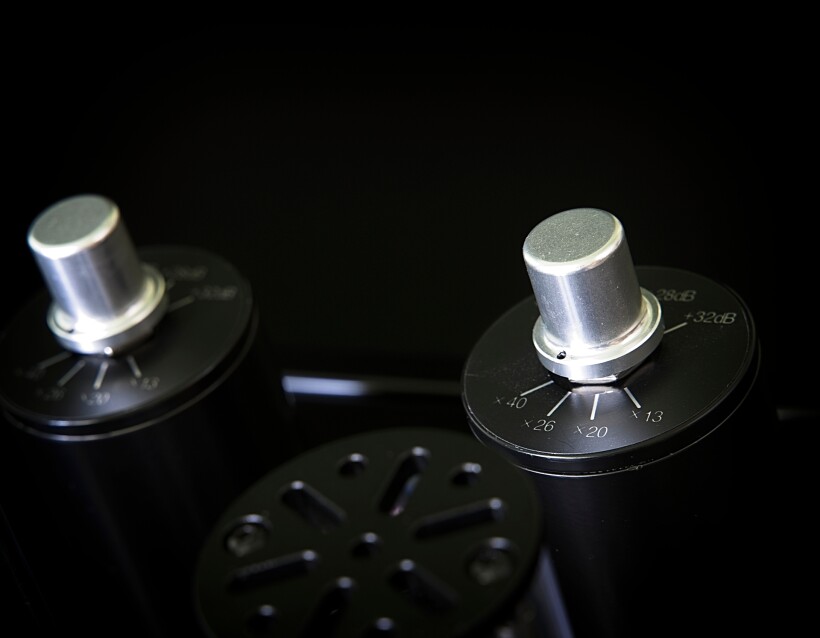
Sound
It so happened that, first of all, the H-5500 spent quite a long time with me, and secondly, it coincided with a period of intensive cartridge testing from various price levels starting from Phasemation P-200 (roughly 5 kPLN) to 37 kPLN Murasakino Sumile (with that company’s step-up costing another 37 kPLN). I spent most of the time listening to the Allnic Audio paired with my Air Tight PC3 and Allnic’s own Amber. Nevertheless, during the period the H-5500 spent with me, Janusz Sikora’s remarkable Kevlar tonearm, the KV12, mounted in his deck, the Standard Max, hosted several other pickups as well, including the Kiseki Black Heart (17 kPLN), the My Sonic Lab Eminent EX (16 kPLN), the Miyajima Saboten (10,5 kPLN), and last but not least, the fantastic Analog Relax EX-500 (24 kPLN). I am not going to break down the description of all these listening experiences for each of these cartridges paired with this review’s subject, as the text would be simply way too long. Those particularly interested will find (most of them only in Polish, though) reviews of each of these cartridges in various magazines. Here, focusing on the Allnic Audio H-5500, I should rather try and draw common conclusions from the entire period spent with the tested phonostage.
I own two great phono preamplifiers that do not cost a fortune, namely the ESE Lab Nibiru (you’ll find my review HERE) and Grandinote Celio MK IV (see HERE). Both are solid-state devices, even though I’m a well-known tubes fan. As I’ve mentioned before, good tube phonostages usually cost a lot, and I mean a LOT, hence my choice (don’t get me wrong – these are two excellent sounding phono preamps!). The Allnic Audio H-5500 is, as we already know, a tube device and its price doesn’t even come close to the previously mentioned objects of my (purely platonic) affections. On paper, it is a very interesting, and, from my point of view, also a good-looking device. I hoped, that it would sound at least as good as it looked and, to a point, similar to the DHT model imprinted in my memory.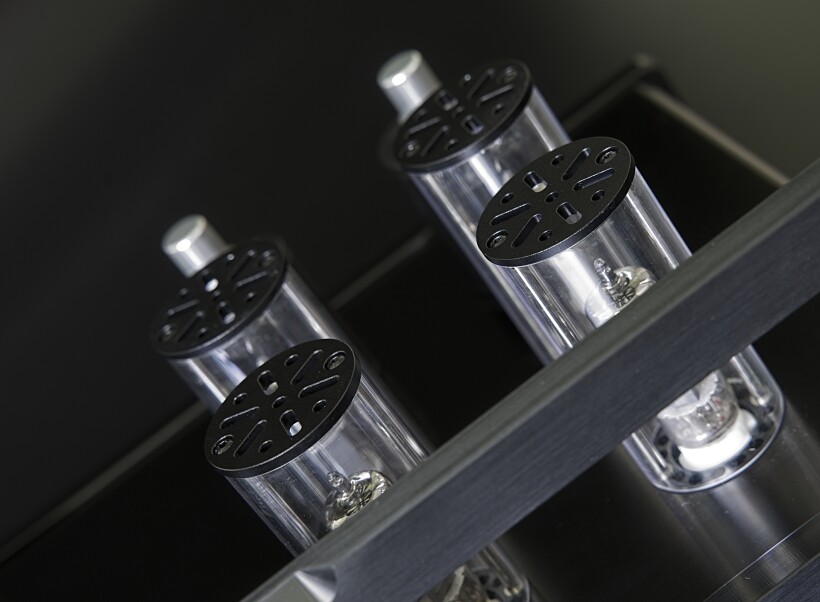
So, what does the H-5500 have to offer apart from an above-average number of inputs? I could just say something like a beautiful, tube sound, but at this point, some people prejudiced against the stereotypical “tube” sound, would probably stop reading, which would be a mistake. The point is, that the tested Allnic Audio does offer the very best qualities tubes have to offer. The sound with it is open, spacious, effortless, tangible, and has this very special, natural flow that most solid-state devices (to my ears) lack. And all these qualities are served at a level that is difficult for transistors to climb up to, regardless of their price. To be clear – there is no denying that the solid-states offer their own set of advantages, just a different one. Also, the H-5500 is by no means limited to the above-mentioned ones; those are just the most obvious right from the start. The easiest way to acknowledge them all was by listening to a quality acoustic recording, say, Tsuyoshi Yamamoto’s „PS. I love you”.
The lightness and effortlessness of the music flow of a jazz trio with a piano in the lead role delivered by the H-5500 were, simply put, delightful. The long, full, sonorous reverb of the piano or cymbals, the tuneful, saturated, large double bass, and the taut, fast, well-differentiated drums beautifully enveloping the whole, created an exciting and highly enjoyable experience. There was no room for boredom, no time to catch a breath, as the tested phono perfectly conveyed all, even the most rapid, changes in pace and dynamic shifts, especially ones at the micro-level. There was no emphasis on details, no attracting my attention to them, though. The Allnic perfectly used the abundance of tiny information read from the grooves of all records by styluses – the better, more refined one, the more details and subtleties it read and the richer the presentation got. Using them the Korean phono preamplifier painted all these complete yet delicate, sort of pastel, beautiful, fluid, emotional musical images. An extremely important aspect of the presentation, basically regardless of the cartridge (although I must emphasize that the H-5500 differentiates the latter well, faithfully reflecting their differences), was the saturated, beautiful, very live-like timbre of each instrument or vocal, hence achieving a level of naturalness usually reserved for more expensive products.
This is a key aspect of the H-5500’s performance, allowing it to deliver a stunning rendition of both vocals and acoustic instruments. An album with Antonio Forcione accompanying Sabina Sciubbie on his guitar perfectly displayed this phonostage’s capabilities. The H-5500 turned listening to it into a particularly interesting experience with Antonio’s guitar and Sabina’s voice constantly fighting for my attention with either the former (an instrument very close to my heart) or the latter momentarily winning, but both sounding incredibly natural, real, and beautiful. The sound of the guitar, dense, warm, rich and when needed, fast, tight, even sharp in other fragments, with fingers gently plucking strings or hitting chords hard, supported properly with „wood”, spoke to me with its realistic timbre, and the vocal charmed me with its effortlessness and way above-average level of expression.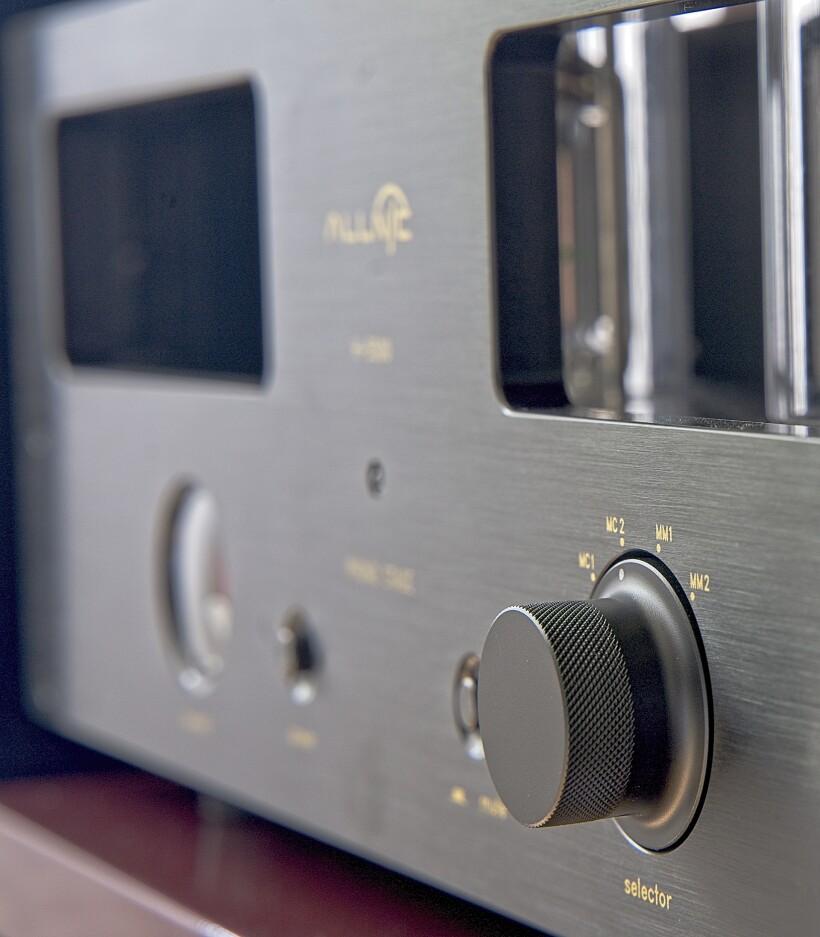
It so happened that during these listening sessions, I had an opportunity for a real-life reference, so to speak, while having a great time at the artist’s live performance in Warsaw, which took place as a part of the Warsaw Summer Jazz Days Festival. On the stage of the „Stodoła” club, Antonio performed together with Adriano Adewale though, and not with Sabina Sciubba. The obvious difference was percussion instruments replacing vocals, but the guitar (or in fact two he used alternatively) was the same. As a man who always looks for similarities between the sound of my home audio system and experiences remembered from live performances, I had quite a unique opportunity to compare my completely fresh memories with what the Allnic Audio phono had to offer.
As it quickly turned out, both in terms of conveying the natural timbre of the instrument and the proper insight into the smallest details of the artists’ performance such as fingers sliding over the strings, tapping on the box, delicate flageolets, the H-5500 did truly solid work. It offered a clean, but at the same time rich, weighted sound. The pace and rhythm of all the tracks were nicely conveyed, spatial aspects perfectly rendered, and the music was presented with a lot of this extraordinary energy and expression, that involved the audience, yours truly included, so easily during the concert. Sitting in my armchair, in front of my system featuring the Allnic Audio phonostage, listening (later) to the maestro’s live album, I had a lot of fun, almost as much as in the Stodola.
The music with the H-5500 was served with exceptional fluidity and ease, with a natural lightness that had nothing to do with a lack of proper richness or weight of the sound, as I couldn’t find anything to complain about. The sound and my response to it weren’t the same as during the concert, simply because the intensity of a live performance could never be matched by a recording, no matter how good the system playing it was. And yet, as it was often the case when the best tube preamplifiers were involved, the Allnic Audio phonostage conveyed the energy of live music and the intensity of the concert experience better than many, even more expensive solid-state phonostages.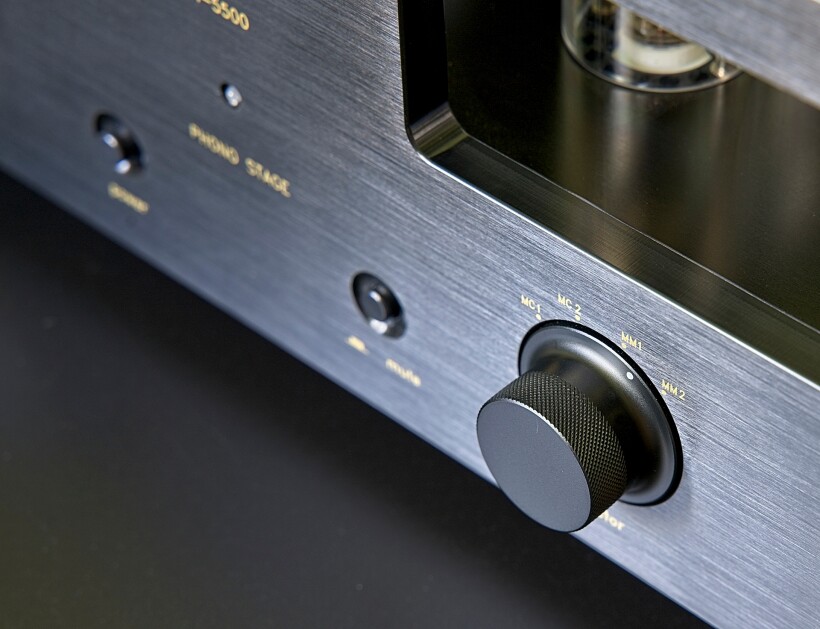
It was an interesting experience to play Stańko’s old album, “C.O.C.X.” published by Pronit. The record is many years old and I bought it second-hand but in good condition. It does not change the fact that it is difficult to consider it an audiophile edition, although the Allnic Audio H-5500 was able to (almost) turn it into one of those. The sound on this release lacks a bit of weight, richness, hence the maestro’s trumpet can sound a bit too bright or sharp. That is why the “tube” nature of the tested phonostage came in handy. The trumpet still sounded sharp, but this time it was a natural sharpness, one that I perceived as inherent to the instrument rather than as a problem of the recording/pressing/release. With the tested preamplifier the sound was a bit more weighted and the edges were smoothed out, which made it much more listener-friendly, more enjoyable than with some very „high fidelity” competitors. The bass, although a bit round, smoothly led the rhythm; it was dense, saturated, and its mass sounded more realistic compared with the same recording played with numerous solid-state phonostages (maybe except for the GrandiNote, because it also fills in and adds weight to the sound).
Looking for any advantages of my solid-state preamplifiers, it was easy to point out that they reproduced fast impulses, transients a bit better; the leading edge was a bit harder, more precise with them, while the H-5500 softened them slightly. Not so much that the sound seemed too slow, but it just was not as precise as with the GrandiNote or ESE Lab. On the other hand, the decay phase with the Allnic Audio seemed a bit fuller, longer, and whenever I listened to any recording made in some large venue, the reverb seemed to come from further away. This is one of the “tube” advantages of the tested phono preamplifier – rendering a huge, realistic space and placing large, three-dimensional phantom images in it. Not as precisely outlined as with the solid-state competitors, and yet, due to the mass and palpability, equally, or even more, present.
Reading everything that I have written so far, I’ve had an impression myself that the Allnic Audio was a phonostage suited exclusively for acoustic music, which is simply not true. The thing is that when it comes to acoustic music the H-5500 stands out among competitors from the same or even a bit higher price level. It’s just sort of its specialty, almost (!) regardless of a cartridge it is paired with. Almost because, as I’ve mentioned already, the Allnic device differentiates the characters and class of cartridges well, or to put it another way, it does not try to impose its character over theirs, letting them shine. Therefore, especially when using it with my Air Tight PC3, My Sonic Lab Eminent EX, or, last but not least, the best cartridge I know – the Murasakino Sumile, i.e., cartridges excelling in terms of dynamics, highly resolving and precise, with a powerful, well-defined attack, well extended, kicking bass, I found myself playing one rock album after another. And when I got bored of them, I moved to electric blues, and then to symphonic music and operas, encouraged with how effortless and convincing the presentation of all these genres was.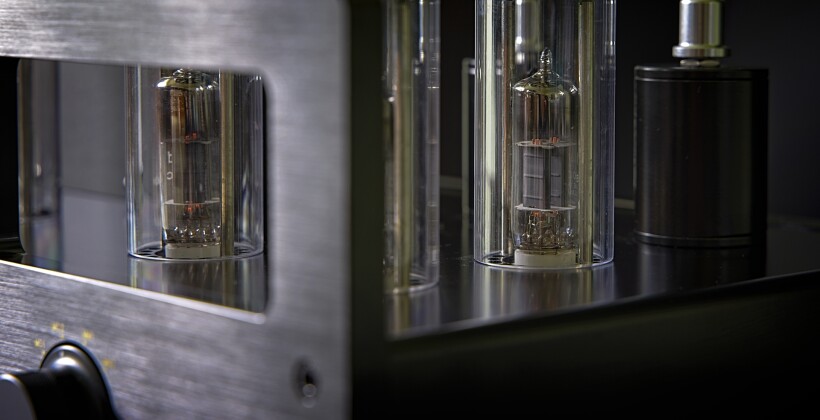
The H-5500 did not show any signs of a particular tendency to round the attack, to blur the contours, or to limit dynamic range, which happens with lesser tube devices. Whenever it got a proper quality signal from a cartridge, all highly energetic, dynamic tracks, be it rock, classic, or any other music, the H-5500 delivered accordingly. I never felt with the Korean device that it lacked in terms of drive or power; on the contrary, it played played music in an exciting, dramatic way, confidently led the pace and rhythm, so easily immersing me in the world of whatever music I decided to play. I pushed the volume hard up when listening to AC/DC’s „Live” or the famous „black” Metallica album, whose technical (production/release) imperfections were slightly tempered by the H-5500. The reviewed phonostage did not put any limits on the dynamics; it was capable of conveying even the highest levels of spontaneous energy of those metal bands. In other words, the Korean phonostage turned out to be a competent and quite versatile device. As it turned out it was the choice of a cartridge that shaped the final character of the sound played from vinyl records. All I needed to do was to choose one that suited me best for the preferred music genres and the H-5500 would do the rest.
Let me finish my review with a slight digression or rather another approach to testing the H-5500 – an experience I described in detail in my Murasakino Sumile’s review. While assessing the Sumile MC cartridge, at some point I used also the Allnic Audio phonostage, including combining its MM section with the Murasakino’s step-up transformer custom made for this particular cartridge, one called Nobala. As I have already mentioned, this is a phenomenal cartridge, a perfect match for the insanely expensive and outstanding (!) Tenor Audio Phono 1. The sound coming from my speakers using a much, much less costly setup, i.e., with the tested phono and Nobala, turned out to be excellent as well (even if not as good as with the Tenor) and better than when I used Allnic’s built-in step-up transformer. It was not a surprise, because first of all, the Nobala is a custom product for this cartridge, and secondly, it costs more than twice as much as the entire Korean phonostage. Nevertheless, this experience proved how good the MM section of the H-5500 was and that it could be used with other brands’ step-up transformers custom made for particular, high-end, or even top high-end cartridges, with great results.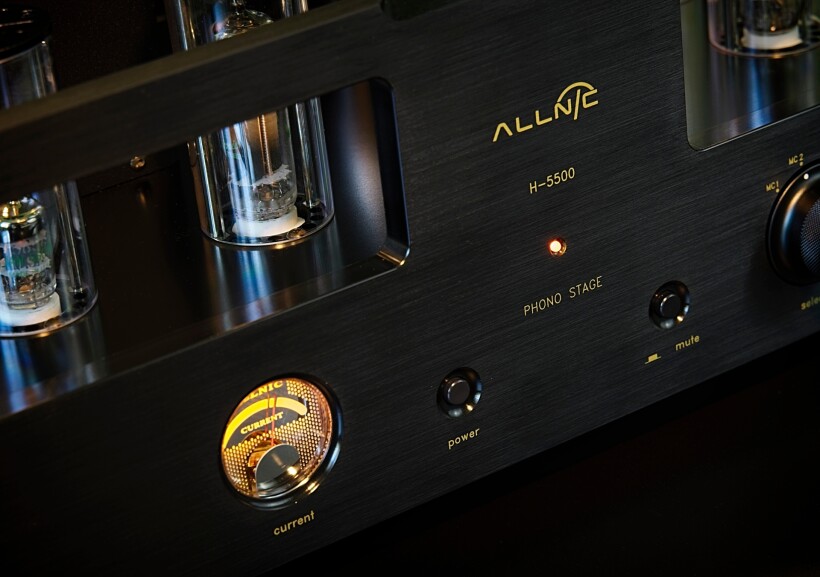
Summary
The Allnic Audio H-5500 is “living” proof of the fact that a great-sounding tube phono stage does not have to cost a fortune. On the one hand, it offers multiple sonic features generally associated with tube devices – natural, refined, fluid and smooth, beautifully open and effortless sound, perfectly reproduced spatial aspects of any recording, and impressive micro-dynamics. On the other hand, though, it is fully capable of delivering an energetic performance with good drive, great pace & rhythm, powerful slam of well-extended bass, as well as strong, vibrant, crisp, well-differentiated treble. It is a fantastic, definitely better than the price suggests, choice for people who prefer acoustic and vocal music; but combined with the proper cartridge, it will also allow you to draw real pleasure from listening to highly energetic, dynamic electric (blues, rock, classical) music.
The H-5500 is an excellent partner for relatively inexpensive cartridges, such as the Phasemation P-200, as well as for the excellent, costing a few times more ones, including Allnic Audio’s own Amber. Such versatility should convince many vinyl records enthusiasts to buy the Allnic Audio H-5500 to accompany a reasonably priced pickup at first but still keep it after upgrading their cartridge and whole system to a new, even significantly higher level.
Technical specifications (according to the manufacturer):
- Inputs: Moving Coil (MC) x Two (2) pairs unbalanced (RCA)Moving Magnet (MM) x Two (2) pairs unbalanced (RCA)Ground: One (1) screw type terminal
- Outputs: One (1) pair unbalanced (RCA)
- Frequency Response: 20Hz ~ 20kHz (±0.3dB)
- Voltage Gains:MM +38dB (1kHz)MC +22, +26, +28, +32dB (1kHz)
- Input Impedance: MC variable up to 280Ω; MM 47 kΩ
- Maximum Input Voltage (MM, non-clipping): 20Hz / 30mV, 100Hz / 60mV, 1kHz / 300mV, 10kHz / 500mV
- Total Harmonic Distortion: Less than 0.3% (1kHz, Output 1V)
- Output Impedance: 1.2 kOhm
- S/N Ratio: -68dB (CCIR, 1kHz)
- Tubes: E180CC x 4, 7233 x 1, 5654 x 1
- Fuse: AC 2A, 250V
- Dimensions: 430mm x 260mm x 170mm (W x D x H)
- Weight: 8.2 kg unpacked, 11 kg packaged
Price (when reviewed):
- ALLNIC AUDIO H-5500: 5200 USD
Manufacturer: ALLNIC AUDIO
Polish Distributor: 4HiFi
Associated equipment:
- Digital source: a custom passive server with WIN10, Roon, Fidelizer Pro 7.10, JCAT NET XE and JCAT USB XE cards with FERRUM HYPSOS Signature power supply, KECES P8 (mono) linear power supply for the server, JCAT USB Isolator
- D/A Converter: LampizatOr Pacific +Ideon Audio 3R Master Time (USB signal regenerator)
- Analogue front end: J.Sikora Standard MAX turntable, J.Sikora KV12 tonearm, AirTight PC-3, phonostages: Grandinote Celio mk IV, ESE Lab Nibiru V 5.
- Power amplifiers: GrandiNote Shinai
- Preamplifier: Audia Flight FLS1
- Loudspeakers: GrandiNote MACH4, Ubiq Audio Model ONE Duelund Edition.
- Interconnects: Hijiri Million, Hijiri HCI-20, TelluriumQ Ultra Black, KBL Sound Zodiac XLR, David Laboga Expression Emerald USB, David Laboga Digital Sound Wave Sapphire Ethernet
- Speaker cables: LessLoss Anchorwave
- Power cables: LessLoss DFPC Signature, Gigawatt LC-3
- Power: Gigawatt PF-2 MK2 and Gigawatt PC-3 SE Evo+; a custom power line with Gigawatt LC-Y in-wall cable; Gigawatt G-044 Schuko and Furutech FT-SWS-D (R)
- Network: Silent Angel Bonn N8 + Silent Angel Forester F1 + optical LAN isolator
- Racks: Base VI, Rogoz Audio 3RP3/BBS
- Anti-vibration accessories: ROGOZ-AUDIO SMO40 and CPPB16 platforms and ROGOZ AUDIO BW40MKII feet, Franc Accessories Ceramic Disc Slim Feet and Wood Block Platform




